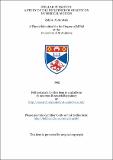Stellar pulsation: a study of the influence of opacity on numerical models
Abstract
A theoretical study of Population II variables has been carried out using the nonlinear approach and using the more recent molecular opacities of Carson and Sharp (1991) with the atomic opacities of Iglesias and Rogers (1991). The calculations have been done using a computer code created by Dr. T. R. Carson. More than fifty models have been constructed for different compositions for Hydrogen (X), 0.745, 0.749 and 0.750 and for Helium (Y) fixed at 0.250. These models belong to three types of stars, RR Lyrae, BL Herculis and W Virginis. The aim of this study was to test the new opacities and compare them with the old ones (especially those of Carson). Generally the periods of the old and new models are in very good agreement. However, the amplitudes of the new models tend to be fairly consistently smaller than those of the old models, tending towards greater agreement with observation. The new blue edges are shifted redward (toward lower temperature) with respect to the old, particularly for the larger values of the metal content Z, and less for smaller Z. However, for the same composition all results are in excellent agreement with those of Carson, Stothers and Vemury (1981) using the opacities of Carson The non-linear results obtained here show that the mass of RR Lyrae cannot be less than 0.6 Msun, while on the other hand, the BL Her variables have mass greater than 0.7 Msun.
Type
Thesis, MPhil Master of Philosophy
Collections
Items in the St Andrews Research Repository are protected by copyright, with all rights reserved, unless otherwise indicated.

